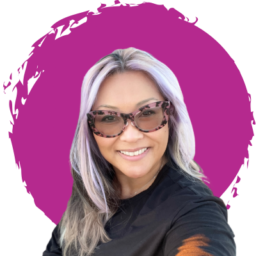When you are building a business, whether you are a new health coach or small business owner, you need have to have a way to connect with your clients. You’ve read that you need to create an email list, no one tells you how to get started from scratch. They tell you how to promote your email newsletter via social media or how to build your existing email list. What if you don’t have anyone on your email list, how do you find people?
When I started an email newsletter for my food and fitness blog. I had ZERO subscribers and I didn’t know how to get started.
WHAT PROBLEM ARE YOU SOLVING?
Before you get subscribers or even start writing your newsletter, you need to plan what you will be sharing. As someone who loves food and struggles with weight, my biggest challenge is balancing eating well with fitness goals. After talking to friends and family, I realized I wasn’t the only one who struggled. Then I asked, what has prevented you from reaching your fitness goals? Their answers influenced the articles I write for my blog and share in the newsletter, both address the roadblocks, along with recipes I’ve tested and enjoyed.
Identifying the problem you are solving, helps you find out who you will be serving. What do I mean by serving? These are potential clients who could use your help. They are the people who will appreciate getting the answers or solutions you are sharing.
HOW TO GET YOUR FIRST 25 SUBSCRIBERS
The first 25 subscribers are your friends, colleagues, and family. The first 100 subscribers will be high touch, you will get in touch personally and start a conversation. They will help you shape the content you share. I went through my contacts in the phone and I sent a text to everyone who might be interested. Here’s a template of what I sent to them, you will need to customize what you will be sharing, then your call to action is “do you want it?” or “do you want to be part of it?”
YOU: “Hey __, I’m starting a newsletter where I’ll be sharing tips on how to balance being a foodie with fitness goals. Do you want it?”
FRIEND: “Sounds cool, send it to me.”
YOU: “What’s the best email address for you?”
After they said yes, I added their name and email address to a Google Sheet that I later uploaded to Mailchimp. You can simplify this by writing their name and email address into a notebook, then later type the contact information into the email marketing tool of your choice. You don’t want to use Gmail because you could be flagged for SPAM and have your account locked as your email list grows larger.
I stopped sending text message after the first 25 people said “yes” to test the initial newsletters with a smaller group to make sure I ironed out the technical issues. I also wanted to be able to text or email my friends to get feedback on what they liked and didn’t like. Each week, I would add another 25 subscribers in the same way.
Next up, importing the Google Doc email list into Mailchimp.
